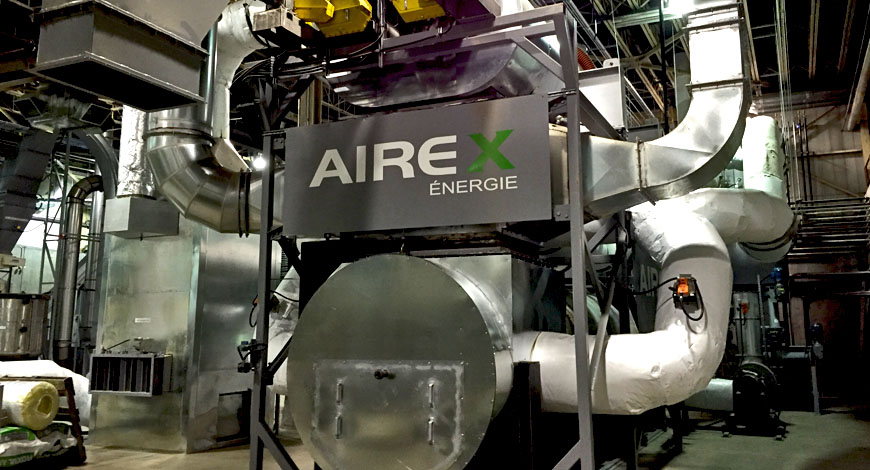
Start-up for Airex torrefaction plant
CarbonFX
Work began on the site in April 2015 with leasehold adaptations and site preparation and since the end of 2015 the plant has been undergoing phased start-ups and testing of equipment. The plant has been designed to commercially demonstrate Airex’s proprietary “CarbonFX” cyclonic bed torrefaction technology. The biomass input used is wood of a pre-determined particle size though, according to Bertrand almost any organic material can be used, and passes an integrated two step drying system. Designed to run as a continuous process, the torrefaction process is a direct heating technology with gasloop linked to the burner and hot gas to the bed. The torrefaction itself takes place in a cyclonic bed reactor with a residence time of a few seconds and temperatures between 290 – 365oC. The torrefied material is cooled and augured out from the bottom of the reactor to then depending on the product can be pelletised. – The CarbonFX reactor has a capacity of 2 tonnes per hour whereas the pellet press has double that. This means the annual capacity of the plant varies, from 15 000 tonnes if only biocoal pellets are produced to 30 000 tonnes for white pellets, explained Bertrand.Flexible production
Another critical purpose of the commercial demonstration plant is to showcase product flexibility by producing conventional “white” wood pellets, biocoal pellets, biochar and biocoke. – This flexibility is key as it reduces investment risk considerably in the chicken and egg situation for torrefied products and technologies. Essentially the investment concept is a white pellet plant with torrefaction capabilities meaning an investor can develop and grow incrementally into biochar, biocoal or biocoke markets with the same plant, explained Bertrand.
We’re excited about our plant and have 2016 to prove ourselves, said Sylvain Bertrand, CEO, Airex Energy.
Head Office
2500 Bernard-Lefebvre Street
Laval, Québec, Canada, H7C 0A5
450.661.6498
Bécancour Plant
103-4170 La Prade Blvd.
Bécancour, Québec, Canada, G9H 0B6
